#my brain has been rewired
Explore tagged Tumblr posts
Text
Haven't been blogging about it because I will come off absolutely unhinged but I'm doing a Taskmaster binge which one of my friend said is
"not a thing people do"
Anyways my brain has been rewired and I can't hold a normal conversation anymore
#taskmaster#im so insane about this stupid British gameshow#my brain has been rewired#it's been less than a month and im on season 12#would've finished it by now if I hadn't traveled to see the dimension 20 tour#been so close to buying the taskmaster board game in London but my friends would fucking hate me
8 notes
·
View notes
Text
Going back to patho classic after playing a bit of p2 feels almost relaxing I have to say
#yesterday I was like ???? i have free time ??? i am not starving or exhausted ??? i only got beaten to death once ???#my brain has been rewired#pathologic
9 notes
·
View notes
Text
SPIDER-MAN SPIDER-MAN SPIDER-MAN
#guess what movie I just saw#my brain has been rewired#I’m so glad I managed to avoid spoilers cuz omg
2 notes
·
View notes
Text

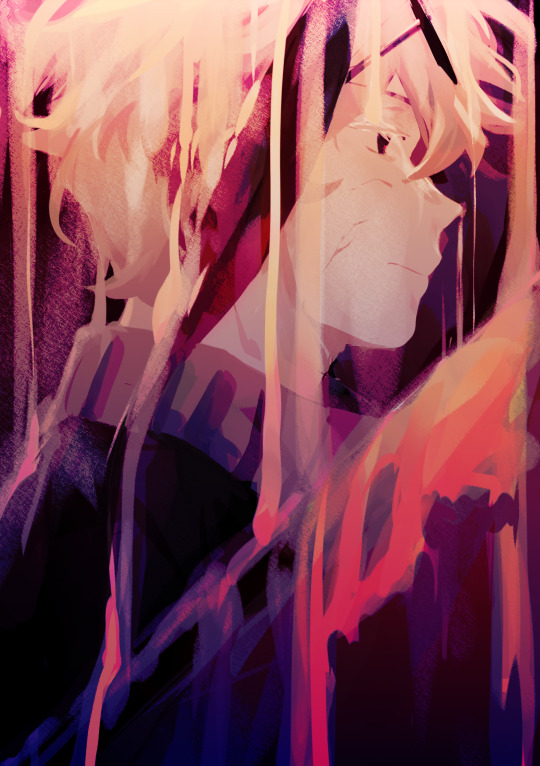
like sand from the hourglass definitelynottober - day 10
#definitelynottober#definitelynottober2024#desert duo#goodtimeswithscar#grian#trafficblr#limited life#limited life smp#my art#2 days late bc of midterms and assignments but we back💥🫵#i need to stop drawing desertduo every day but like i feel like my brain has been rewired
2K notes
·
View notes
Text
DEAD RECKONING P1 WAS REALLY FUCKING GOOD???
Spoiler tag will be -> mission impossible spoilers
1 note
·
View note
Text
So I played ghost trick,
1 note
·
View note
Text

my heartbeat sounds funny!
#one piece#gear 5 luffy#op luffy#monkey d. luffy#i lost a bet so i had to start watching one piece#i also lost my furina 50/50#so i did it#all 1088 episodes#and the latest manga chapters#so thats what i was doing for 2 months#my bad guys#i got glue trapped#my brain has been rewired in an indescribable way#luffy forever
3K notes
·
View notes
Text


🥵😮💨
#max verstappen#2nd one he’s taking a little breather after blowing ur back out 🥰#icb i’ve never seen this video before tho?????#my brain has been rewired completely#*mygifs
628 notes
·
View notes
Text

hi guess who finished endwalker recently OTL
#ff14#ffxiv#ffxiv endwalker#endwalker spoilers#hythlodaeus#emet selch#hythades#KEEP THOTTING IT UP IN HEAVEN KINGS#I MISS U GUYS SM#ELPIS ARC MY BELOVED truly one of my fave parts of the expac#when i saw them for the first time i crumbled#bashed head on the wall#SOBS#my entire brain chemistry has been rewired thanks xiv im never recovering from this#GRRGHHHFSFHJAAAAAAARRGGHHHHDSDFGH
767 notes
·
View notes
Text

Fact: Kazemaru lives for the thrill and danger of being a ninja, to the point of almost losing her mind after her household became a legitimate business and she had to do office work.
Fact: In her E2 art, the real Kazemaru is actually the one on the right, all beat to shit. Her origami clone is the one on the left protecting her, as evidenced by the mask (which the clone wears ingame) and paper tail.
Fact: Her clone only appears ingame after she's taken substantial damage, either from her s2 or being straightup KO'd.
Fact: She's basically stuffing her face in her clone's boobs here.
Conclusion: Kazemaru loves being a ninja because it gives her an excuse to enter situations where she gets beat up, and subsequently rescued by her hot clone.
#arknights#kazemaru#this kittykat has been on my MIND lately#learning she's actually the one on the right rewired something in my brain
456 notes
·
View notes
Text
Tell me what you’re willing to do. Kiss it kiss it better, baby..
#this is a visual representation of what has been playing on repeat on my mind all week long#god i always have a song stuck in my head where i mentally play around with its different parts and how it fits a scene or a scenario then#I get consumed by the irresistible urge to pick those layers apart again and again and again until it's almost imprinted in my head forever#LOOK AT THEMMMMM MY BRAIN IS REWIRED#911 lone star#tarlos#tk strand#carlos reyes#911ls#kiss it better#music tag#911lsedit#tarlos edit#ronen rubinstein#rafael silva#5x05
134 notes
·
View notes
Text
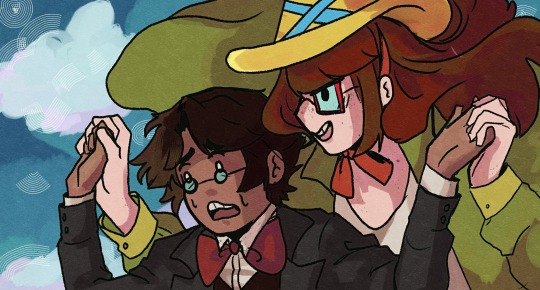
Do you understand my vision…
#simon petrikov#betty grof#Petrigrof#adventure time#adventure time fionna and cake#watched Howls Moving Castle again shortly before Fionna and Cake and now my brain has been rewired
840 notes
·
View notes
Text
@joannerowling
[Introduction]
While many articles have been written about Harry Potter and the school board genre or its relationship to fantasy, very few people have looked into the influence of the Gothic in Harry Potter (or in JKR's works in general). Part of it I think is due to the depreciation of Harry Potter by the cultural bourgeoisie, who only regard it as mere children's books that don't hold any actual literary value and that aren't worth to be studied seriously. Yet many tropes, storylines and plot devices used by JKR draw inspiration from the Gothic genre, bringing to it a modern twist by both adverting and subverting Gothic clichés. This inspiration is apparent in JKR's focus on broken families stuck into a cycle of poverty and violence involving incest and alcoholism or in the settings of many of the most iconic scenes of her book (to me the situation of Merope Gaunt, the way she's treated by her male relatives and the description of her house clearly allude to that of Catherine Linton at Wuthering Heights). In another (badly written) post, I tried to argue that one example of such a subversion in JKR's works was her use of the Gypsy theme -- Romani people as the embodiement of marginality, social and sexual danger as well as oriental mysticism --, a trope of Gothic literature most notably used by Emily Brontë in Wuthering Heights and Victor Hugo in the Hunchback of Notre-Dame, and that's been studied by Ken Lee in his article on Gypsylorism. But while JKR never once mentions Romani people in the Harry Potter series (an omission that is very interesting in itself; she's leaving out of her series the ethnic group that's been associated the most with witchcraft in folk tales for centuries, even though she's drawing inspiration from European folklore), she does mention them a bit in The Casual Vacancy and a lot in Cormoran Strike. However, as opposed to Wuthering Heights and HoND, Romani people aren't actually associated with paganism in JKR's books (they would have if she had been racist); their mention serves a Gothic aesthetic purpose as the non-Romani pov character starts thinking about Gypsy witchcraft and wandering, but that romanticising is quickly destroyed once the narrative brings up the actual reality of what it means to be Romani(-adjacent) in the UK: poverty and social exclusion. (In my opinion, this is a subtle commentary on how rich people idealize wanderness and poverty despite their being trauma-inducing experiences for the people who experience them.)
In my opinion, another influence of the Gothic is also the character dynamic she builds around Harry and Voldemort. In three different ways, the Harry/Voldemort dynamic parallels that of Dracula and Mina Harker in Bram Stoker's Dracula: first, the in-narrative construction of that dynamic; second, the way that character dynamic is used as a plot device by both Stoker and JKR in their respective works; third, the significance/symbolism of that character dynamic.
1. The narrative build up
In both Dracula and HP, the psychic bond that unites Mina/Harry and Dracula/Voldemort is created in spite of Dracula and Voldemort. In Dracula, that bond is an inevitable consequence/side effect of the repeated blood sucking Dracula does on Mina. In HP, that bond is created despite the knowledge of Voldemort and as a consequence of Voldemort's murder attempt.
In both stories, that bond was created/reinforced by blood mixing. In Dracula, blood mixing allows Dracula to link his mind directly with Mina's. In HP, that bond becomes much stronger after the graveyard scene, when Voldemort also uses Harry's blood to regain life. In both cases, we have blood magic and DNA mixing involved, resulting in an identity crisis on the part of Harry/Mina (their sense of self is eroded after the distinction between their body and that of Dracula/Voldemort got blurred and as the emotions/thoughts of the other start influencing theirs).
Dracula forms a psychic bond with Mina Harker as a step towards mind control. He wants to read, manipulate and control her mind and her thoughts, and in particular, he wants to use it to spy on his enemies (Jonathan and Van Helsing). However, he is forced to block the link when he realizes that, if he can spy on the heroes through Mina, Mina can spy on him as well by being put into a hypnotic trance that allows her to sense Dracula and his surroundings and can feel how far away or how close he is to them. This is what eventually leads the heroes to Dracula and allows them to catch him.
In Harry Potter as well, Dumbledore fears that psychic link would be used by Voldemort to spy on the Order of the Phoenix through Harry. This is why Dumbledore ignores and isolates Harry for an entire year and this is also what prompted Dumbledore to get Snape to teach Occlumency to Harry -- to block Voldemort's thoughts. But Voldemort doesn't actually use the link to spy. afaik he only uses it twice: once to deceive Harry and get him to come to the Ministry of Magic, and once at the very end of OotP when he briefly takes control of Harry's body. But Harry (just like Mina) realizes he can use that link to his own advantage and spy back on Voldemort (he repeatedly does so in DH): just like Mina, Harry is able to feel what he feels, to hear his thoughts and to sense how far or how close he is.
So we have a similar process following the same steps: evil blood magic on the part of an unwilling villain first, blurring of identity second. In both stories, the psychic link serves as a war strategy playing out over a deep identity crisis. The difference is that this process spans 4 books and 13 years in Harry Potter, with many more smaller steps in between, but overall it's still the same structure.
2. The Harry/Voldemort (Mina/Dracula) dynamic as a plot device
Because everyone uses the psychic link to spy on the other, it becomes a power play for the two characters involved, symbolically representing the struggle between life and death (love and hatred). But it also serves a narrative purpose: both stories are written from the perspective of the heroes. By introducing the psychic link as a plot device, the reader can get some insight into the pov of the villain of the series. The psychic link then becomes a way to drive the action: after each discovery, the character (be it Mina, Harry, Dracula or Voldemort) takes action. They plan a fight/battle, they track each other or they fly from each other. With the psychic link, the writer (Stoker/Rowling) is able to write very cool descriptive scenes from a totally different perspective, taking place in a totally different setting we don't normally see otherwise (think of the description of the Riddle House at the beginning of GoF -- an apparition that is justified in-narrative by its being shown to Harry in a dream). In both Dracula and HP, the psychic link also allows the writer to write dialogues that have more to do with the mystery genre than the fantasy genre (what's the villain doing? are we sure that information is legit? who is he talking to?) Finally, and even if we have to wait a few chapters for it, it leads to the introduction of battle scenes.
So both Dracula and HP use the psychic link as a plot device in a similar way: 1. it drives the action by justifying the writing of descriptive scenes, action scenes and dialogues, 2. it makes the story even more compelling for the reader who gets to hear the exclusive thoughts of the villain in a setting we are not used to (the villain's lair!) so those scenes feel special and cool, 3. it allows the writer to diverisfy the genre of their book by introducing new elements taken from the mystery genre.
3. The symbolic of that relationship
Voldemort, just like Dracula, is an undead being, a living dead. While Voldemort himself isn't a zombie (an "inferi"), a ghost or a vampire, he does surround himself with them and his physical description is very much akin to that of the undead. Two of his most significant features are his paleness (also a recurrent adjective to describe ghosts) and his long, spidery fingers, which together can be used to describe both Voldemort and Nosferatu:
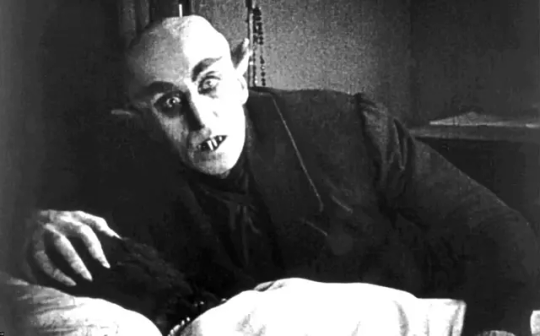
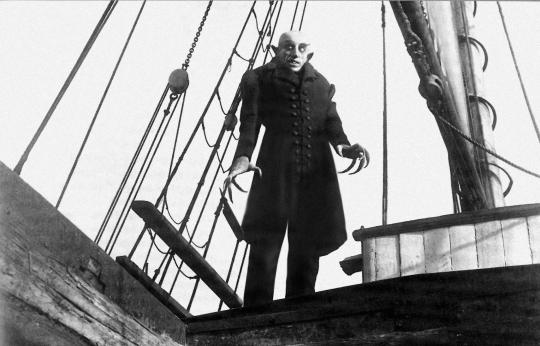
(book!voldemort literally looks like this bad guy over there ^ but without a nose and with red eyes -- and this is why he haunts my sleep sometimes!! that character design fucks)
Symbolically as well, Voldemort is an undead being, a living dead, as it says in his very name ("fleeing death", "flight from/of death"). In his backstory as well, Voldemort became twice a living dead. First, by spiritually killing himself and rendering his soul to the dark arts in pursuit of immortality (in much the same way vampires render their soul to the devil). Second, by falling victim to his own Avada Kedavra spell in Godric's Hollow. (Harry is an example of how one survives the Avada Kedavra; I wouldn't say Voldemort survived it considering all the (physical, if not spiritual) remnants of his past humanity were completely destroyed by it.)
More specifically, Voldemort is a vampire: in his very first apparition in the series, he is seen drinking the lifeblood of a living creature (a unicorn). All throughout the series, Voldemort is the undead that needs to feast on others to survive, by exploiting his followers (in the years following Godric's Hollow, he only survives by drawing on the life force of Quirrell and by living as a parasite with Pettigrew), by living on the terror he inspires to other people, and by turning other living beings (Nagini and Harry) into horcruxes (the same way a vampire would turn the human he drinks the blood of into another vampire). Of course, the number 1 inspo for Voldemort is the boogeyman: everyone in the wizarding world is scared to say his name in case he might literally materialize out of thin air. But he is not described (narratively, physically) as any boogeyman, he is specifically the vampire.
Just as Voldemort is Dracula, Harry is Mina Harker: a human being who represents life. Both Harry and Mina carry a part of Voldemort/Dracula's inside of them, and both of them are scared of eventually becoming like them. Both Harry and Mina survived their confrontations with Voldemort/Dracula thanks to the help of their friends (love and friendship trumping death). Both of them are also common human beings who have been involuntarily turned into something so much more unique by the very assault they survived. The way they responded to it (opposing hatred with love and bravery) turned them into something so much more important than mere human beings: they became symbols inspiring strength to others around them. And all throughout the story, both Mina and Harry retain that common-ness, it is repeatedly stated by both Stoker and JKR, in-narrative, that the only thing that sets them apart from others is Mina/Harry's ability to feel empathy and to draw strength from the love of others.
In the novel, Mina openly feels pity for Dracula - not for the monster that he is but for his soul, explicitly questioning whether it might want to find peace. In the last two books of the HP series, Harry also takes on a similar stance with regards to Voldemort. Dumbledore's last teaching was that Voldemort was someone to be pitied (don't feel pity for the dead but for those who live without love), and even though pity doesn't excuse evil, it gives us the moral ground to be better people and create a better world. This was also Dumbledore's most important teaching, the one Harry only fully understands by the end of Deathly Hallows, when he confronts Voldemort and says the only thing that sets him apart from others and that makes him stronger than Voldemort is the love he feels (only understanding this after spending the entire book trying to figure out why hadn't Dumbledore left a strong weapon, like the elder wand, for him in his will).
So in both their moral complexity wrt to the villain and in the ideals they represent, Harry and Mina are very similar. I would finally add that both of them represent vulnerable groups of people (children and women) who are victims of male/patriarchal violence: Harry (a 14yo boy) is abducted and tortured by Voldemort (an adult male) in Goblet of Fire, while Mina is metaphorically raped by Dracula. It's a bit tangential but I think it's another interesting parallel between these two; in all of her books, JKRowling often associates the harm men do to women to the harm fathers(/male authority figures) do to children and the way Voldemort repeatedly tortured, abducted and tried to kill Harry from age 0 to age 17 could also be one of the ways she builds on that social commentary.
[Conclusion]
=> So narratively, I would say JKR drew inspiration from Dracula when designing the Harry/Voldemort bond. In Dracula and HP, that link is established in pretty much the same way: through blood magic, DNA mixing and resort to the dark arts. It is repeatedly reinforced throughout the story following the encounters of Mina/Harry and Dracula/Voldemort, and it serves as a war strategy between the two of them as everyone involved realizes they can use it to spy on the other, leading to the ultimate demise of the villain. When it comes to character growth, the psychic link also works in the same way: it leads to emotional/mental/psychological distress for Harry/Mina who is scared to become evil too. Structurally as well, JKR used a plot device identical to that developed by Stoker in Dracula to create the Harry/Voldemort dynamic. The psychic link introduces a POV-shift in a book series that's otherwise almost exclusively written from the good guy's pov, drives the action by leading to descriptive/action scenes and dialogues, and makes the story more entertaining for the reader. Thematically, I would also say JKR drew inspiration from Dracula when creating Voldemort and Harry as characters. In the books, Voldemort represents a vampiric living dead boogeyman who rendered his soul in search of immortality (just like Dracula), while Harry represents the hidden force of life and love that lies inside the most common of people (like Mina).
#i accidentally wrote it as a dissertation i didn't even do it on purpose my brain has just been permanently rewired by school sadly#jkrowling#rowlingblr#hp meta#harry potter#gothic
81 notes
·
View notes
Text

06.28.24 | SEA vs MIN [x]
57 notes
·
View notes
Text
why does no one ever talk about triage??? ITS SO GOOD????
#just finished ep 1 & i already know triage is going to rewire my brain chemistry#where has triage been all my life#it’s everything i could want and more#triage the series#triage#tintol#thai bl
91 notes
·
View notes
Text
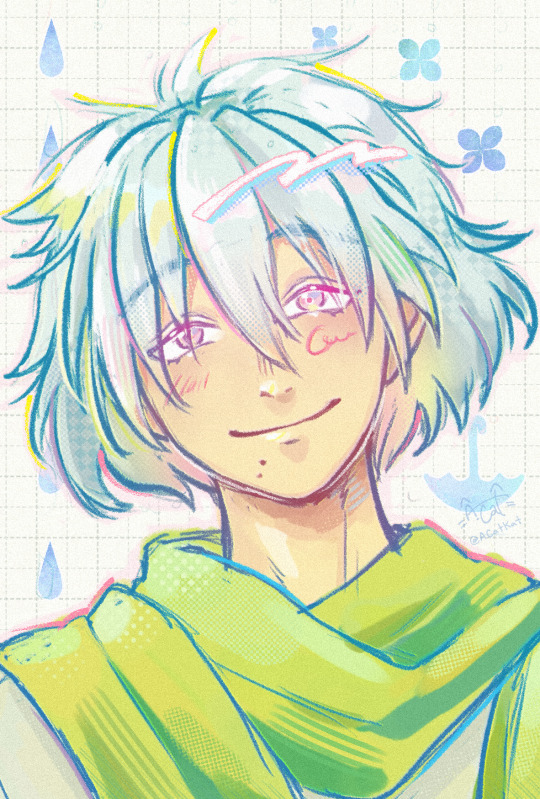
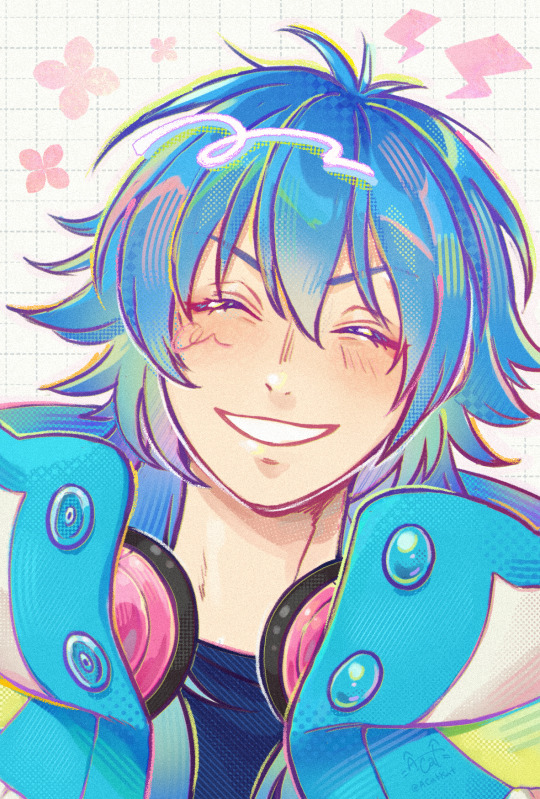
Clear & Aoba for my lovely friends!
#DMMD#Dramatical Murder#aoba dmmd#clear dmmd#sketch#fanart#the way dmmd has latched onto their brains is astounding and it has been a lot of fun seeing something rewire their brains in real time#I know nothing of either of these characters!! I just like their colors and my friends like them both a lot
294 notes
·
View notes